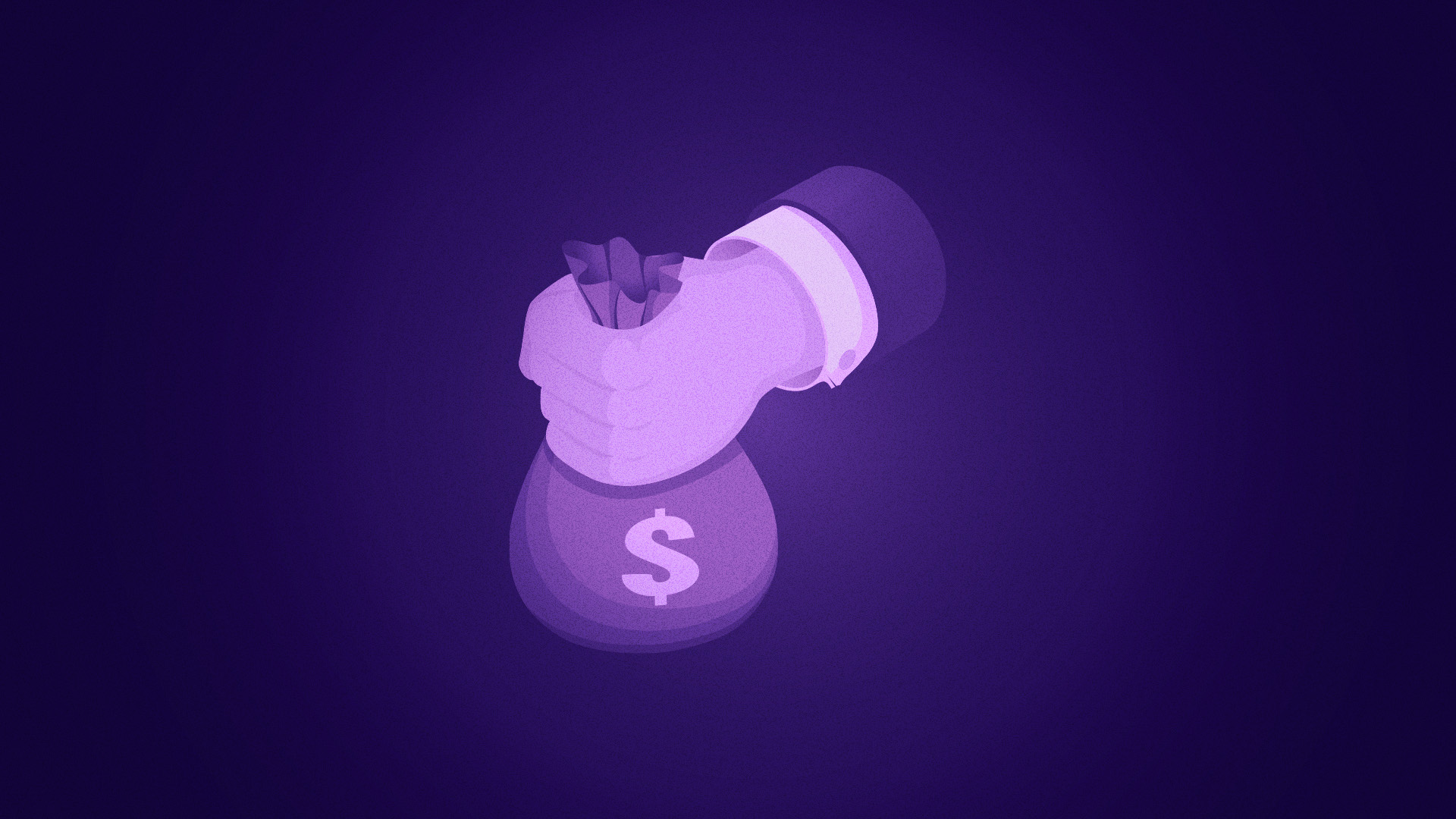Decentralised exchanges (DEXs) became popular after Ethereum launched and have since become a key part of the decentralised finance (DeFi) ecosystem.
At their core, DEXs are built on blockchain technology and smart contracts, which facilitate transactions automatically without the need for a central authority. The main benefits of this decentralised approach are better user control, privacy, and access to a huge number of tokens.
However, DEXs also come with their own set of challenges, such as increased technical complexity and potential liquidity issues. Users also need to take responsibility for their own security.
In this article, we’ll answer the question, What is a DEX?, explaining how it works and how to use one.
We’ll also cover how DEXs give users more control and security, limitations and potential risks, and then, a step by step guide on how to start using a DEX.
Definition of a Decentralised Exchange
A decentralised exchange (DEX) is a type of cryptocurrency exchange that works without a central authority. In other words, they help facilitate trade in a peer-to-peer manner.
In a DEX, users maintain full control over their private keys and funds. This basically eliminates the need to trust a third party with their assets, like in centralized exchanges. Everything is automated using blockchain technology and smart contracts.
How DEXs Work
Decentralised exchanges (DEXs) have been around since 2016. But they had two problems; slow trading and high costs.
Everything changed when Uniswap came onto the scene, introducing the first Automated Market Maker (AMM) system that actually worked. This system used a concept called liquidity pools to set asset prices and carry out trades.
Here’s how the AMM system works:
- Users add liquidity by putting pairs of tokens into a pool—like Ethereum (ETH) and a stablecoin like USDT—in equal value.
- The smart contract managing the pool uses a simple formula to set token prices based on the ratio of tokens in the pool. If there’s more ETH than USDT, ETH is cheaper. If there’s more USDT than ETH, ETH is more expensive.
- Traders can then swap one token for another using the pool. For example, they can trade ETH for USDT directly from the pool.
- The smart contract automatically completes the trade, updates the pool’s balance, and adjusts the token prices for the next trade.
Think of it like a see-saw: when one token goes up, the other goes down. The smart contract keeps everything balanced and makes sure the prices are fair.
Types of DEXs
Now, let’s talk about the different DEX types. There are four main types of decentralised exchanges—each one works differently. They include:
- Order Book-Based DEXs
- Automated Market Maker (AMM) DEXs
- Hybrid DEXs
Order Book-Based DEXs are quite similar to the traditional exchanges mode of operation. They also use an order book with buyers and sellers to match buy and sell orders. Hence, they can have lower levels of liquidity than the centralised exchanges.
AMM DEXs work on a different concept from conventional exchanges; instead of an order book, they work on liquidity pools. These pools can contain pairs of tokens, and smart contracts define the prices based on the tokens’ proportional ratio. Examples include Uniswap and SushiSwap.
Hybrid DEXs capture features from both the Order Book Based model and the Automated Market Maker based model. It combines the features of order books and automated market makers making it versatile for trading.
It is worth understanding that each type of DEX is unique and has its advantages and disadvantages. Order Book-Based DEXs are easy to use but may not be as liquid as we might like. AMM DEXs supply continuous liquidity and ease; however, they have challenges with price slippage. And then we have the hybrid DEXs which provide a mixture of both features desired by different traders.
Advantages of Using DEXs
So we’ve covered how a DEX works up to this point. But what are the advantages of using a decentralised exchange compared to its centralized counterparts?
Perhaps the number one DEX advantage is that it allows users to get access to new cryptoassets faster compared to CEXs, which takes quite some time to list new tokens.
This is because you don’t need to manually add new tokens on a DEX or check their compliance that may otherwise hinder them from entering the market.
Also, DEXs maintain the privacy of users since no identification or KYC or AML procedures are necessary. This allows users to trade in anonymity without having to share sensitive details.
DEXs are also easier to access, particularly for individuals from developing countries with limited access to working financial systems.
Challenges and Limitations of DEXs
Decentralised exchanges have several limitations that you should know.
One of the biggest challenges is the learning curve. If you’re new to using a DEX, it’s easy to get confused due to its poor user interface. You don’t know what to do, where to connect your wallet or even how to manage the tokens.
The poor UI/UX of most decentralised exchanges have resulted in failed transactions, and even worse, lost tokens. To top it off, some of them don’t have good customer support you can complain to.
Another problem affecting DEX platforms is high gas fees, especially when using popular blockchains like Ethereum. Gas fees are the costs incurred when executing trades on the blockchain network.
These charges can easily run very high especially on busy networks thus any transaction, regardless of its complexity, could prove to be costly. For instance, executing a simple swap on a DEX can cost at least $100 plus, depending on the network traffic.
Popular DEX Platforms
A number of decentralised exchanges have grown in user base. Here are some of the most popular DEX platforms:
- Uniswap: A revolutionary AMM-based DEX. This platform is known for its unique approach to trading and providing liquidity.
- SushiSwap: This community-driven DEX focuses on user participation and governance, offering a distinct method for trading.
- PancakeSwap: Built on the Binance Smart Chain, this DEX offers one of the quickest and cheapest environments for token swaps. It also has one of the best user interfaces.
Security and Risks
One of the top risks when using a DEX is falling for scam projects. This is because anyone can create a new token and get it listed on a DEX without proper vetting like in centralized exchanges. Any mistake can result in you swapping your funds for a fake asset that may drain your entire wallet.
So, DEX users always have to be on their toes, checking every token name, doing due diligence on new projects and more so they don’t get rugged.
How to Start Using a DEX
Using a decentralised exchange is quite straightforward once you get the hang of the interface and features. Note that almost all the DEX types follow the same process. The differences are not so much.
Here’s how to start using a DEX step by step:
- Set Up a Cryptocurrency Wallet: Use a secure wallet that supports the blockchain of the DEX you wish to use. Metamask is the most popular wallet to use.
- Connect to the DEX: Use the wallet’s interface to connect to the DEX platform.
- Select the tokens you want to swap: Choose the token in your wallet, for example Ethereum, and the token you want to swap it for; let’s say Bitcoin.
- Execute the trade: Once you confirm all the details are correct, including the fees, you can then complete the process by clicking on “Swap” or the corresponding button on the exchange you’re using.
The Future of DEXs in the Cryptocurrency Ecosystem
The future of DEX platforms will rely mostly on the overall adoption of the crypto market. So far, over 100 million people use decentralised exchanges daily and there’s potential for growth.
One of the main predictions for DEXs is its integration into the traditional finance scene. This integration would make it easy for individuals and even institutions to participate in the crypto market, using systems they’re already familiar with.
Of course, some regulatory hurdles may slow down this integration. The good news is that, we’re seeing some countries and government bodies come up with proper regulatory guidelines like the Markets in Crypto-Assets Regulation (MiCA).
Once there’s proper regulations in place, DEXs would be at the forefront of bridging the gap between decentralised and traditional finance. And then, institutional investors can easily jump on board.











